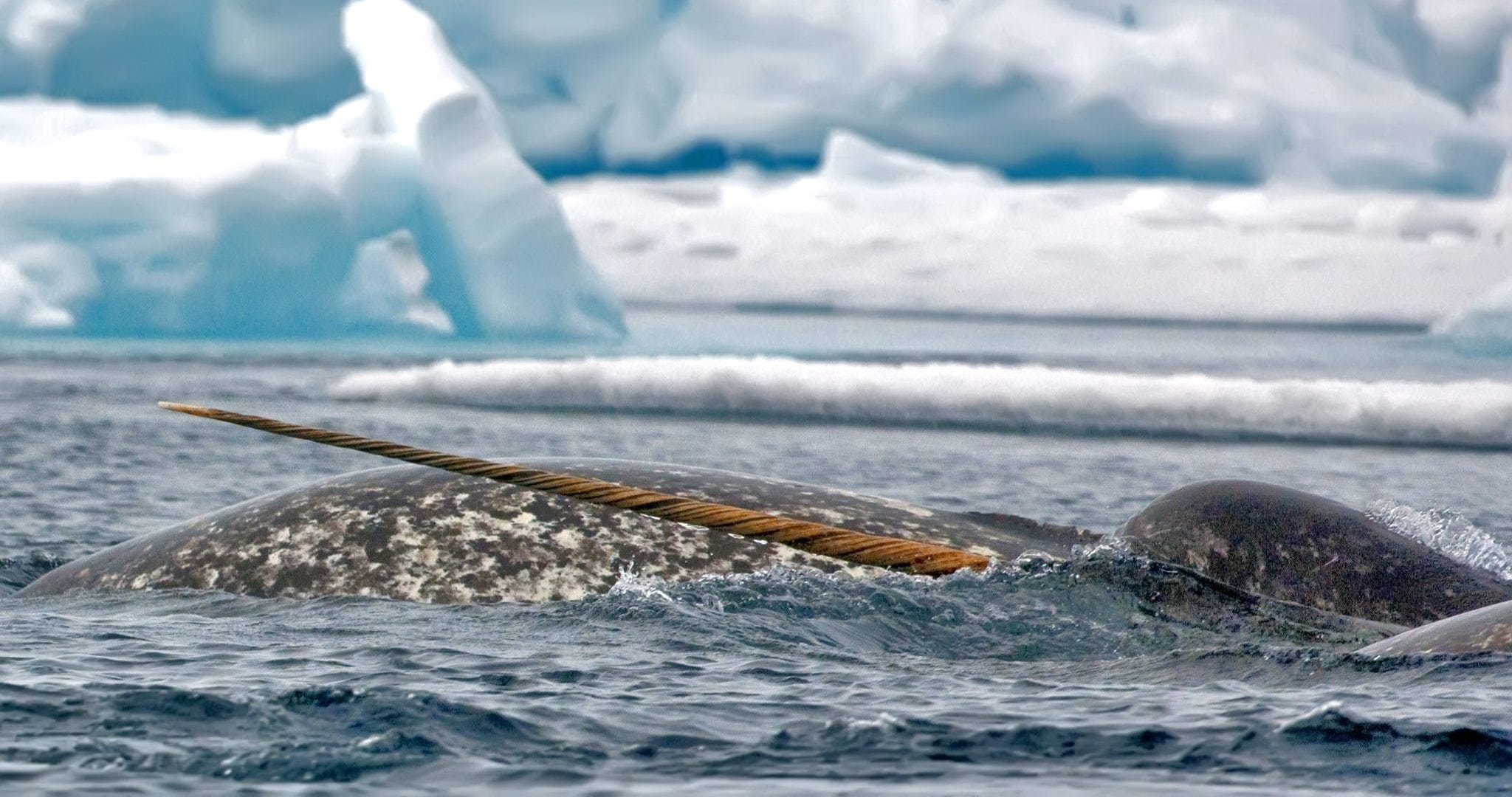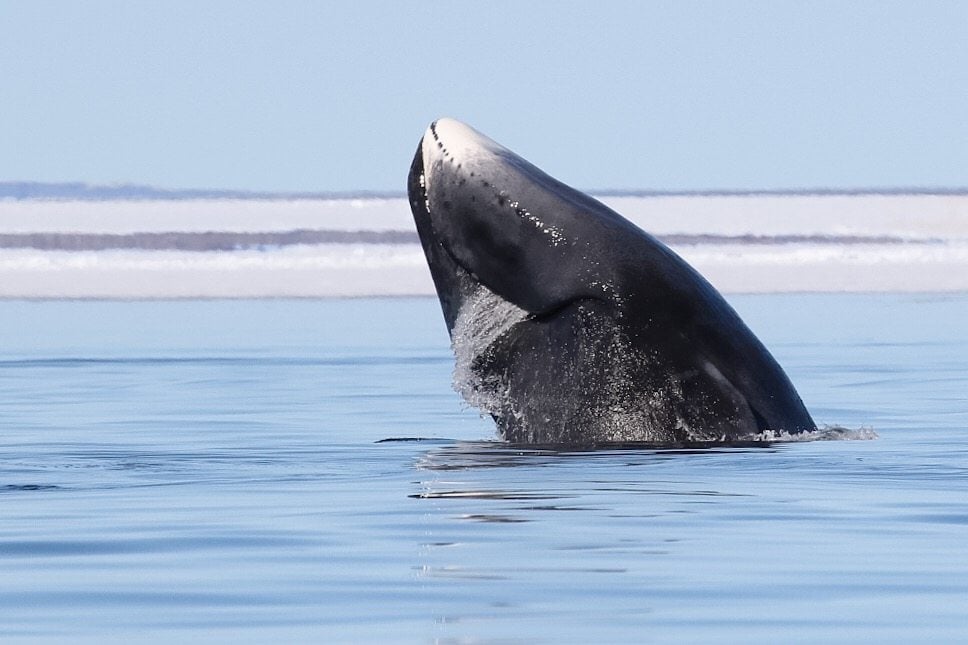With World Whale Day happening recently, we thought we would introduce you to some of the whales that call the Canadian Arctic home.
Even though this day was started in Hawaii to bring attention to humpback whales making their annual migrations and environmental awareness, we hope to bring some light on some more northern whales that live in a beautiful but dynamic landscape.
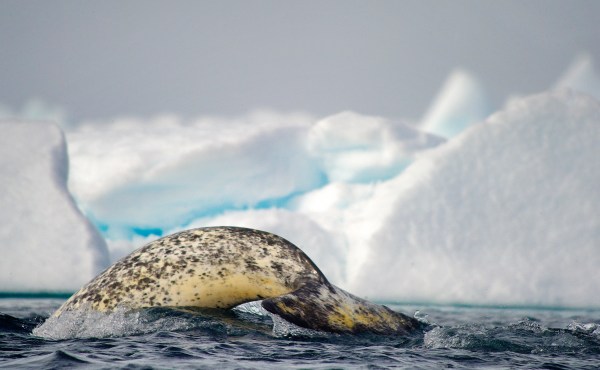
The Arctic’s Big Three Whales
While there are a number of whales that travel to the Canadian Arctic in the summer, there are three whales that remain in the Arctic and subarctic waters all year round.
These whales have evolved to succeed in the Arctic and take advantage of sea-ice. It can be a tough life to live in such frigid waters through winter, but it is safer due to its hardships.
Come find out more about these peaceful whales and what helps them navigate the challenges of living in Arctic waters.
Bowhead Whale
Also Known As: Greenland Right Whale
Scientific Name: balaena mysticetus
Length: 18 m (60 ft)
Weight: 100,000 kg (100 tons)
How Many Live In Canada: 90% of the world’s population
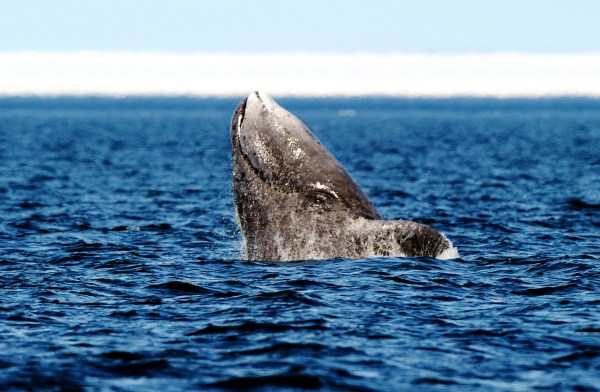
This gentle giant got its name ‘bowhead’ from their enormous triangular skull that can be used to break through 18 cm (7 in) of solid ice in order to create a breathing hole. This ability allows them to remain in the Arctic through the winter even when there is sea ice.
These whales are not victims of sea-ice but are closely tied to it. Since they do not have dorsal fins on their back, they can access smaller breathing holes since they can get so close to the frozen surface. This also lets them hide from predators like orca who famously have large dorsal fins.
Another way bowhead whales rely on the season sea-ice is the collection and release of krill and other food for the whales. When the ice starts to melt in the spring, the crustaceans that spent the winter holding onto the bottom of the sea-ice start to get energized by the sun and start to swim freely. This is when the bowhead swoops in and will eat enormous amounts of them.
The bowhead whale has the largest mouth in the world and will eat 2 tonnes of food daily. Since the Arctic waters have such limited competition it allows the whales that do live here to eat so much, even in the sparser winter months.
Another way that these whales have adapted to the cold waters is to be able to lower their heart rate to reduce the amount of energy expended. Incredibly, this ability to lower their heart rate is believed to help them live up to 200 years old.
So, maybe Polar Dips are more medicinal than we thought!
Narwhal Whale
Also Known As: Narwhale, Unicorn of the Sea
Scientific Name: monodon monoceros
Length: 4.5 – 5.5 m (15 – 18 ft)
Weight: 800 – 1,600 kg (1,760 – 3,530 lb)
How Many Live In Canada: 90% of the world’s population
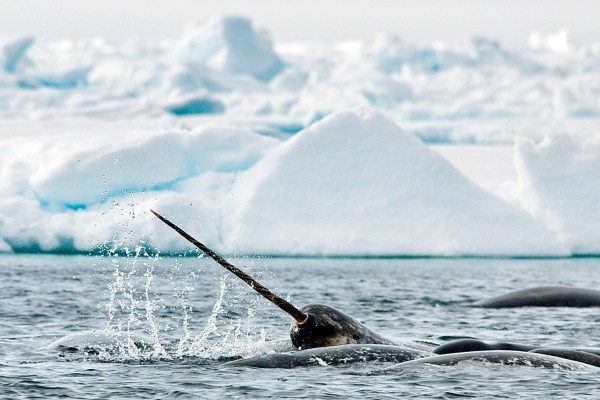
Narwhal are known as the Unicorn of the Sea due to their tusk, which is actually a helical canine tooth. This tusk is more common in males, but females can grow them. The fact that tusks are founds on males and females leads scientists to believe it is not used for mating or courtship but is used as a sort of information centre.
The tusk is believed to pick up on salt and oxygen levels in water in order to help the whales navigate narrow cracks in the ice or to find openings in the frozen surface. Thus, when you see them rubbing their tusks with other narwhal, it is to pass on valuable information.
These whales do not have dorsal fins so they can take shelter under the sea-ice and can take advantage of small breathing holes.
While they do not eat the crustaceans floating below the sea-ice, they really enjoy the fish that eat those marine invertebrates. Finding halibut and cod are easier in the summer months but narwhals are one of the deepest diving mammals to find food during the winter months.
In fact, narwhals can dive 1.5 km (4,900 ft) up 25 times a day in order to find food in the colder times. This mixed with their ability to dive for 25 minutes allows them to live in waters, like Baffin Bay, when it’s mostly frozen.
Beluga Whale
Also Known As: White Whale, Canary of the Sea
Scientific Name: delphinapterus leucas
Length: 5.5 m (18 ft)
Weight: 1,600 kg (3,530 lb)
How Many Live In Canada: 66% of the world’s population
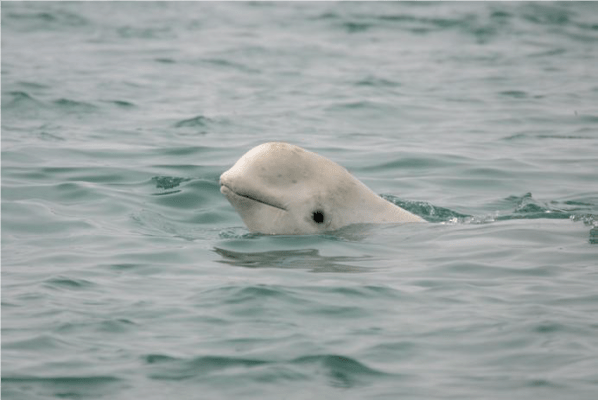
The beluga is one of the most gregarious whale and enjoys socializing. They can manipulate the size and shape of their protruding forehead, called their melon, in order to make a variety of clicks, chirps, squeals and whistles to communicate or convey information. This makes them one of the most verbal whales and has led to their nickname of the Canary of the Sea.
Along with allowing them to make distinct noises, their bulbous forehead houses an echolocation organ. Their ability to communicate and a highly developed sense of hearing is their strongest asset in the Arctic waters as they navigate the sea-ice and lead pods towards their summer territories.
Like other Arctic whales, the beluga does not have a dorsal fin to take refuge under sea-ice and has the added advantage of being all white so they can camouflage with the ice.
Thanks to their social nature, they are one of the most exciting whales to see on a whale watching tour. They are able to turn their heads to look at you and their upturned jaw make them look like they are smiling, making them one of the cutest animals to see.
Come See Arctic Whales in their Habitat
The Arctic’s Big Three whales are more than impressive, they are incredible to see in person. These are some of the most friendly and awe-inspiring whales in the world and you can see them in their natural habitat.
Our Narwhal & Polar Bears, A Floe Edge Safari takes you right to the edge of the water where you can stand on the floe edge and watch whales swim right past you. Since we are safely on the ice platform we do not scare or stress whales from the sounds of boat engines so you can have intimate and up-close viewing opportunities.
If you want to learn more about how you can see Arctic whales like narwhal, beluga, and bowhead then click here.
Experience The Arctic On A Safari
Get chances to view elusive Arctic wildlife and experience the majesty of the Arctic on safaris almost year-round. View all Arctic Safaris here.
Ready for adventure? Contact our Arctic Travel Advisors to book your Arctic getaway.
We now have a Gear Shop where you can browse some of the best outdoor clothing and equipment to buy or gift to friends and family.
Are you still curious about the many wonders of the Arctic or looking for more interesting content then explore more blogs here!
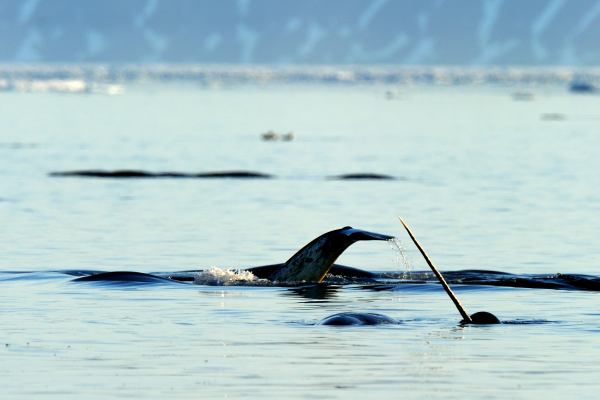
By: Mathew Whitelaw



